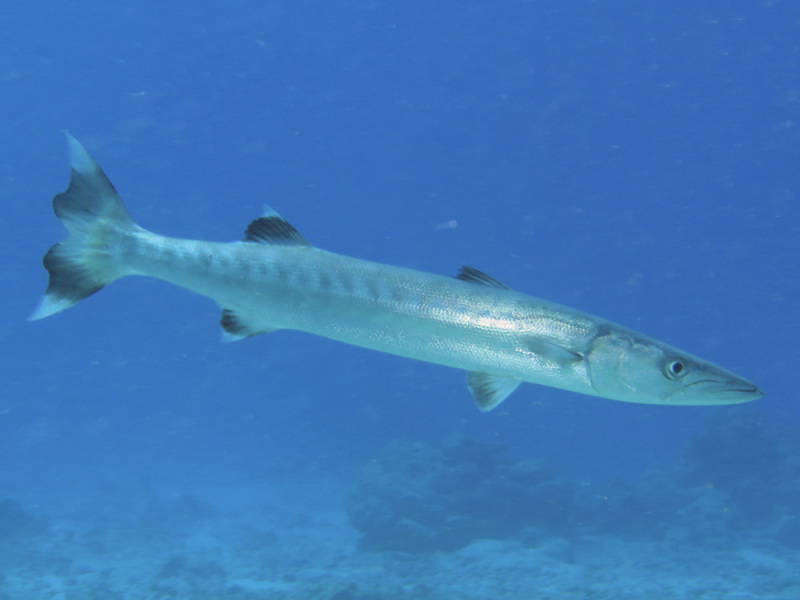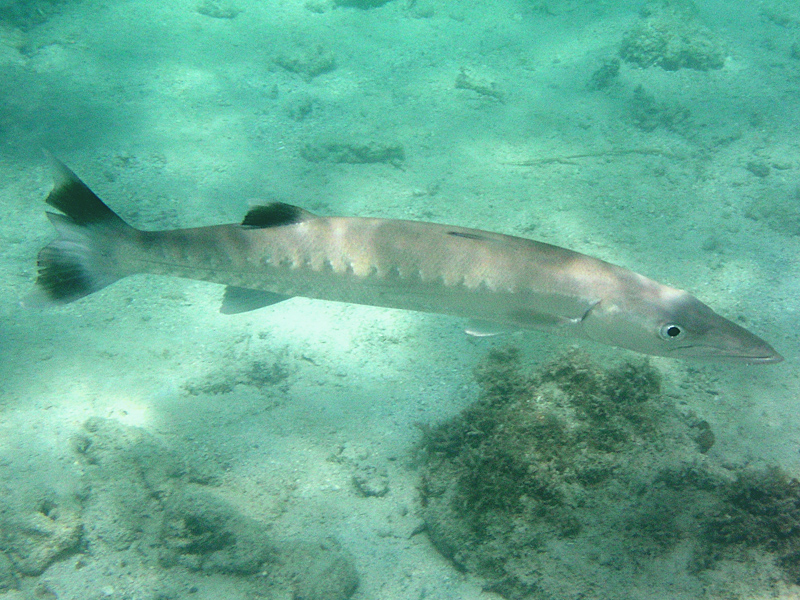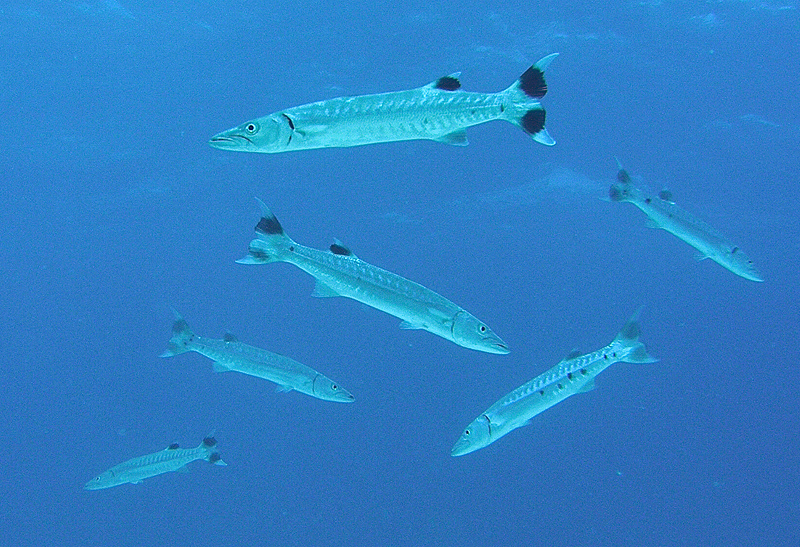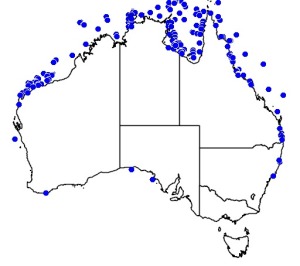Colours
Distinguishing features
A medium to very large elongate silvery fish with large eyes, underslung jaw, and a dark tail. Usually seen singly over coral reefs or along rocky shores.
Size
- Up to 200 cm (Standard length)
Depth range
- Depth range data is not yet available.
Synonyms
Distribution
Distribution and habitat preferences
Reef fronts and channels with good water movement and plentiful prey fishes, although smaller specimens can be seen in sheltered lagoonal and backreef habitats.
Can be found in most locations around the island.
Behaviour
This species feeds on reef fishes, and is a well known source of ciguatera poisoning. Individuals aggregate near areas of current flow where small fishes feed, and lie quietly in wait before making a rapiad attacking rush. Has caused injury through biting at silvery objects such as rings and watches on snorkellers and divers, and will also get very excited if fish are speared in the vicinity. These fishes grow slowly, maturing at about 6 years and living to more than 30 years.
Web resources
Danger
- unspecified - This species is known to have caused ciguatera poisoning and should not be eaten.
References
- Bray, R.A., T.H. Cribb and S.C. Barker (1993). Hemiuridae (Digenea) from marine fishes of the Great Barrier Reef, Queensland, Australia, Systematic Parasitology, 25: 37-62. LIRS catalog number 484.
- Burdon-Jones, C. and G.R.W. Denton (1981). Metals in marine organisms from the Great Barrier Reef Province. Part 1. Base line survey,Interim Progress Report, James Cook University, Townsville.. LIRS catalog number 69.
- Porter, H.T. and P.J. Motta (2004). A comparison of strike and prey capture kinematics of three species of piscivorous fishes: Florida gar (Lepisosteus platyrhincus), redfin needlefish (Strongylura notata), and great barracuda (Sphyraena barracuda), Marine Biology, 145: 989-1000. LIRS catalog number 90143.
- View all references





